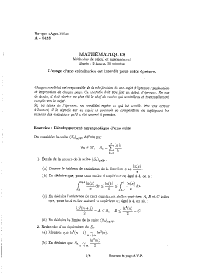Équations différentielles linéaires
📝 Mini-cours GRATUIT
Parcours Méthodologique : Equations différentielles linéaires vectorielles
🎲 Quiz GRATUIT
📄 Annale PREMIUM

Annales Banque Agro-Véto 2016 (Mathématiques BCPST)

Annales Banque Agro-Véto 2016 (Mathématiques BCPST)



